“Kumokiri Wakizashi 1060 Series”
The Kumokiri Wakizashi was inspired by the legend of Minamoto no Yorimitsu and the yokai Tsuchigumo.
In the Heike Monogatari, when Yorimitsu suffered from malaria, and lay on a bed, a strange monk who was 7 shaku (about 2.1 meters) tall appeared, released some rope, and tried to capture him. Yorimitsu, despite his sickness, cut him with his famous sword, the Hizamaru, causing the monk to flee. The next day, Yorimitsu led his Four Guardian Kings to chase after the blood trail of the monk, and arrived at a mound behind Kitano jinja where there was a large spider that was 4 shaku wide (about 1.2 meters). Yorimitsu and the others caught it, pierced it with an iron skewer, and exposed it to a riverbed. Yorimitsu’s illness left him immediately, and the sword that cut the spider was from then on called the Kumo-kiri (spider-cutter). The true identity of this tsuchigumo was said to be an onryō of the aforementioned local clan defeated by Emperor Jimmu. This tale is also known from the very fifth noh, “Tsuchigumo.”
SPECIFICATIONS
• Blade Material: 1060 carbon steel (mono-steel)
• Edge: Fully Sharpened
• Treatment: Hand Forged, Through Hardened, Heat Treated & Tempered, Water Quenched
• Blade Length: 19 inches
• Tsuka: 6.75 inches wood
• Saya: 20.5 inches matte black finish
• Tsuba / Fuchi / Kashira: Iron
• Habaki / Seppa / Menuki: Brass
• Tsukaito: Gray-green silk
• Sageo: Black shigeuchi silk
• Mekugi: 2 bamboo pegs
• Samegawa: Real ray skin panels
• Nakago: Full tang
• Hamon: None
NOTES
• Specs may vary slightly from sword to sword
• Can be disassembled
• Includes cloth bag and carton box
The tsuba made of blackened iron, features a moth caught on a spider web. This tsuba was also based on an Edo period tsuba but without the moth. We added the moth in the design to represent Yorimitsu being captured by the Tsuchigumo. The sword cutting the yokai may be a legend, but this sword with a blade made of through-hardened 1060 carbon steel can definitely cut bamboo, a traditional target in tameshigiri. This cutting target is represented by the brass menuki, having bamboo leaves design. The simple fuchi-kashira are also made of blackened iron to complement the tsuba. The habaki features a “neko-gaki” or cat scratch pattern (also called falling rain) which is usually seen on nihonto with high quality koshirae (sword fittings).
The Kumokiri Wakizashi has a matching katana making them a daisho.
S&D Unokubi Zukuri Tanto 1
S&D Nami Mitsudomoe Katana
S&D Kaiken
S&D Zatoichi Cane Sword 1













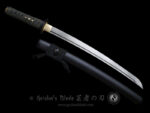
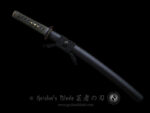

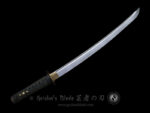




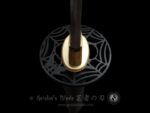



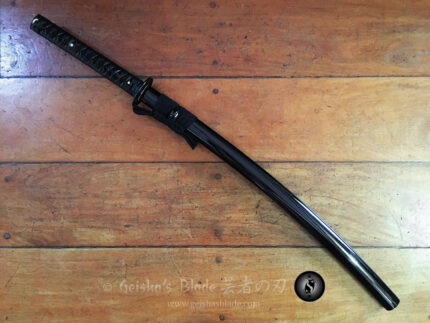


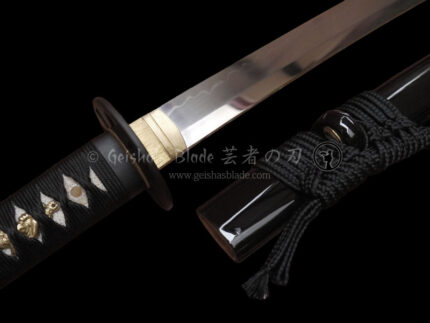
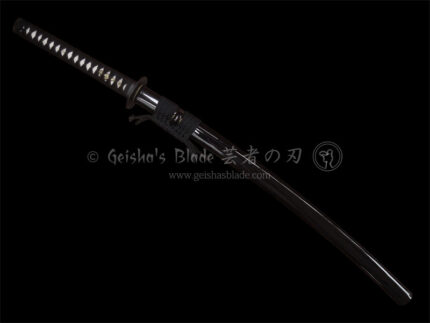


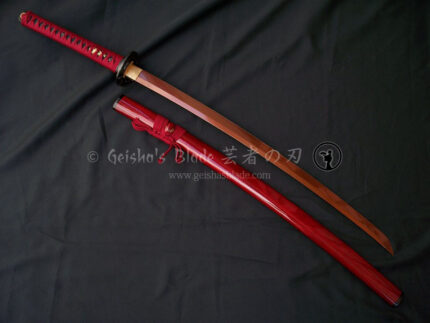

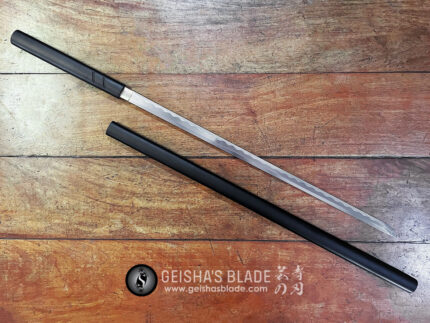
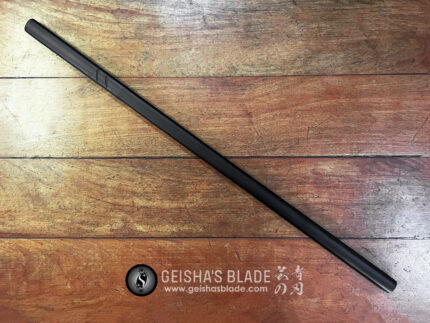


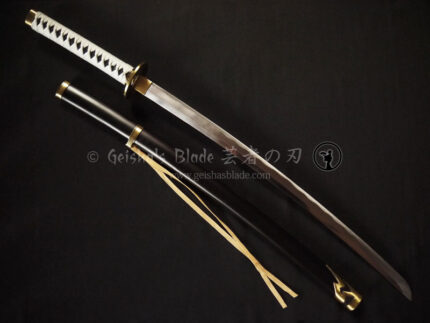

Reviews
There are no reviews yet.